The Basic Futsal Positions And Their Roles
Ready to explore the different futsal positions? Discover what each position does on the court, as we reveal how each role strategically influences the flow of this fast-paced indoor sport.
Futsal follows along the same rules of regular football, with some exceptions because it’s played on a much smaller field, and with less players. Like we said, it’s kinda like Football(Soccer), but not really.
What sets apart Football(Soccer) from Futsal is the field. While the first one is played on a huge grass field, Futsal is played on a hard court of considerably smaller dimensions, and it’s almost always played indoors.
There’s also the fact there are eleven players in regular Football, while in Futsal there’s a total of five, four if you don’t count the goalkeeper, which of course, makes up for the smaller game field.
To put it simply, they both follow similar, and played with similar balls (Yes, the futsal ball is smaller and has a bit different construction), but the goal is the same: to score on the other team’s goal.
The Five Futsal Positions
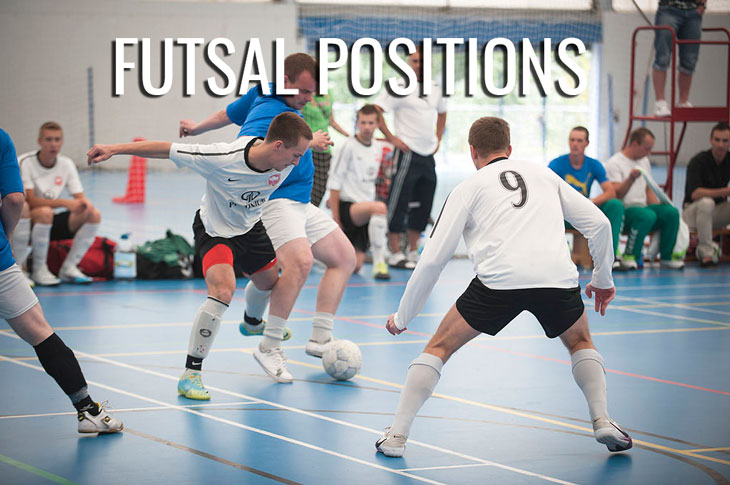 Like we said, this sport is a bit more unique than football, and even though the goal is the same, you’ll soon start to realize these two sports, although similar, have much more differences than you might expect.
Like we said, this sport is a bit more unique than football, and even though the goal is the same, you’ll soon start to realize these two sports, although similar, have much more differences than you might expect.
That being said, let’s start talking about the five positions in Futsal, what they are, and what the players in those positions are supposed to do! Are you ready? Let’s begin then.
The Goalkeeper
Unlike regular football, where the main position is usually the one that scores the goals, in futsal the goalkeeper is the most important player by far, since he’s supposed to guard the goal from the other players trying to pass him and score.
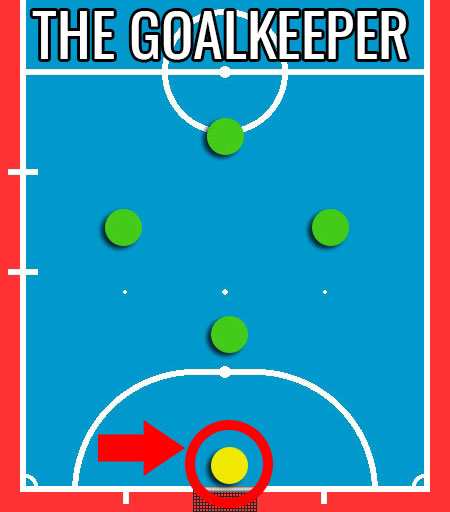
A Goalkeeper in any version of the football sports does the same tasks: defending the goal and touching the ball with their hands when necessary (since they are the only ones who can actually do this). Other than that, their position doesn’t really require them to run up and down the court.
Futsal goalies use their hands and body to block the ball and keep it out of the net. They need to be quick, move fast, and have good reflexes to stop shots. Sometimes they wear special finger-less gloves to help catch the ball, but this is a matter of preference. Some of them choose to use bare hands when guarding the goal.
Defender
The goalkeeper and the defender have similar tasks, with the only difference that the Defender can’t touch the ball with their hands, but also have to prevent the other team from scoring.
They do this by keeping the ball on the other end of the court and making smart passes to the other players of their team so the opposite team can’t take over possession!
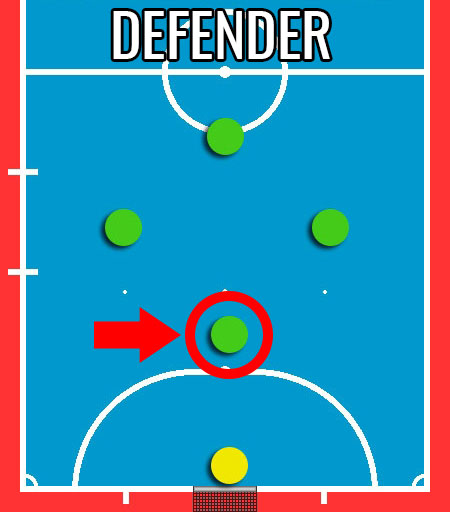
Defenders stay close to the opponents and try to stop them from getting too close to score. They have to try and block the ball, and also try to take it away from the opponents using careful tackles. They need to work together with their teammates to make sure the opponents don’t have an easy time getting near the goal. A defender generally need to be strong, quick, and have good timing to block passes and shots.
Winger
Have you ever seen those players that move up and down the futsal court passing the ball around to their other team mates? Those are the wingers, and there’s usually two of them, one on each side of the court.
They are fast players who are constantly running and passing the ball. Their position isn’t actually defensive or offensive, they are there to help the pivot when needed and make the defender’s job easier.
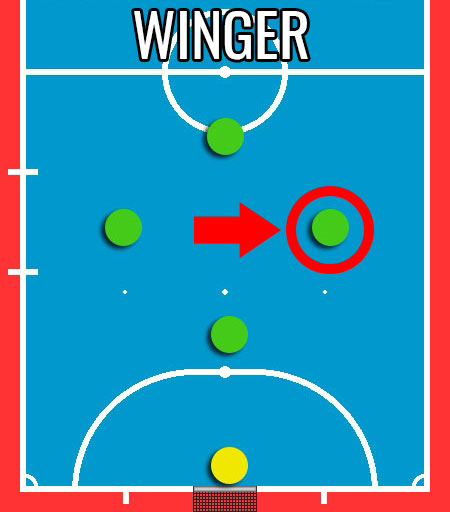
Wingers are important because they help create scoring opportunities by sending the ball forwards towards the middle of the field or near the enemy goal, where their teammates can receive the pass and shoot at the opponent’s goal. They also need to be quick and skilled at dribbling the ball to get past opponent’s defenders. Wingers may play a bit farther away from their own goal, since they are mostly focusing more on attacking and setting up chances for their team to score.
Pivot
Also known as the topman, the Pivot is the most advanced player in the sense he has the highest position on the court and is constantly attacking the other team’s goal with the intention to score as much as possible. The pivot is the most offensive player and the most dynamic having to constantly press the opponent’s defense in order to set himself up for scoring goals.
Amongst all the other players and futsal positions, the pivots are responsible for attacking the other team and trying to score goals. You could say they are the most active players in the whole game.
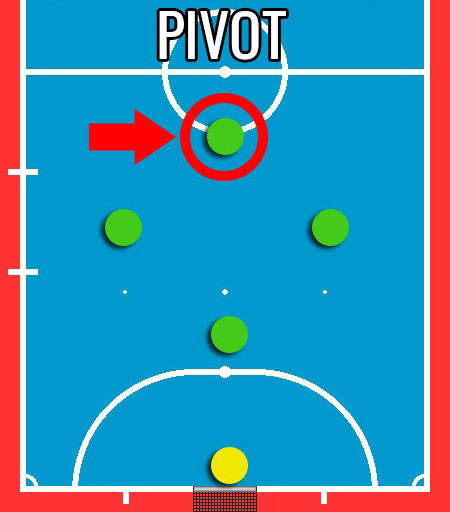
Pivots try to position themselves close to the opponent’s goal, ready to score. Their main role is to receive the ball, use their dribbling skills to pass the defenders, and then take accurate shots to find the back of the net. Pivots need strong physicality to hold off defenders, excellent ball control to keep possession, and precise shooting skills to make their shots count. They’re team’s goal-getters, always on the lookout for opportunities to score and play a crucial role in turning attacks into goals.
Bringing It All Together: Futsal’s Vital Player Positions And Their Collective Roles
In the dynamic game of futsal, each player’s position plays a unique role. Each player brings his own contribution to the team’s strategy and effort. And since this is a 5 member team effort, the importance of each player position cannot be overstated. The goalkeeper guards, defenders protect, wingers create opportunities, and pivots score. Put them all together and you get a team of coordinated players that work towards the same goal: winning the game. Futsal heavily relies on the synergy between these roles to create a harmonious game.
Every player in each position contributes uniquely. Remember, futsal’s beauty lies in the harmony of these roles, working together as one and showcasing teamwork and skill.
In the end, the sport is about the collective effort of these different player positions and their roles that defines the game of futsal. The beauty and intensity of futsal derive precisely from the responsibilities and skills of each of the futsal positions, and how all of these roles come together into a cohesive and synergized team-play. And so, as futsal continues to captivate fans and players as well, we should be aware of the significance of each role, because, in the end, it’s the sum of these parts that makes futsal a beautiful sport to play or watch.
In conclusion, as you may have noticed, the futsal positions are quite straightforward. With this knowledge, you are ready to choose the position that suits you best in your future games. Furthermore, the next thing you have to consider though, is how these positions fit into a good team strategy. For that we recommend that you check out our take on the best futsal formations and tactics. Have fun on the court!